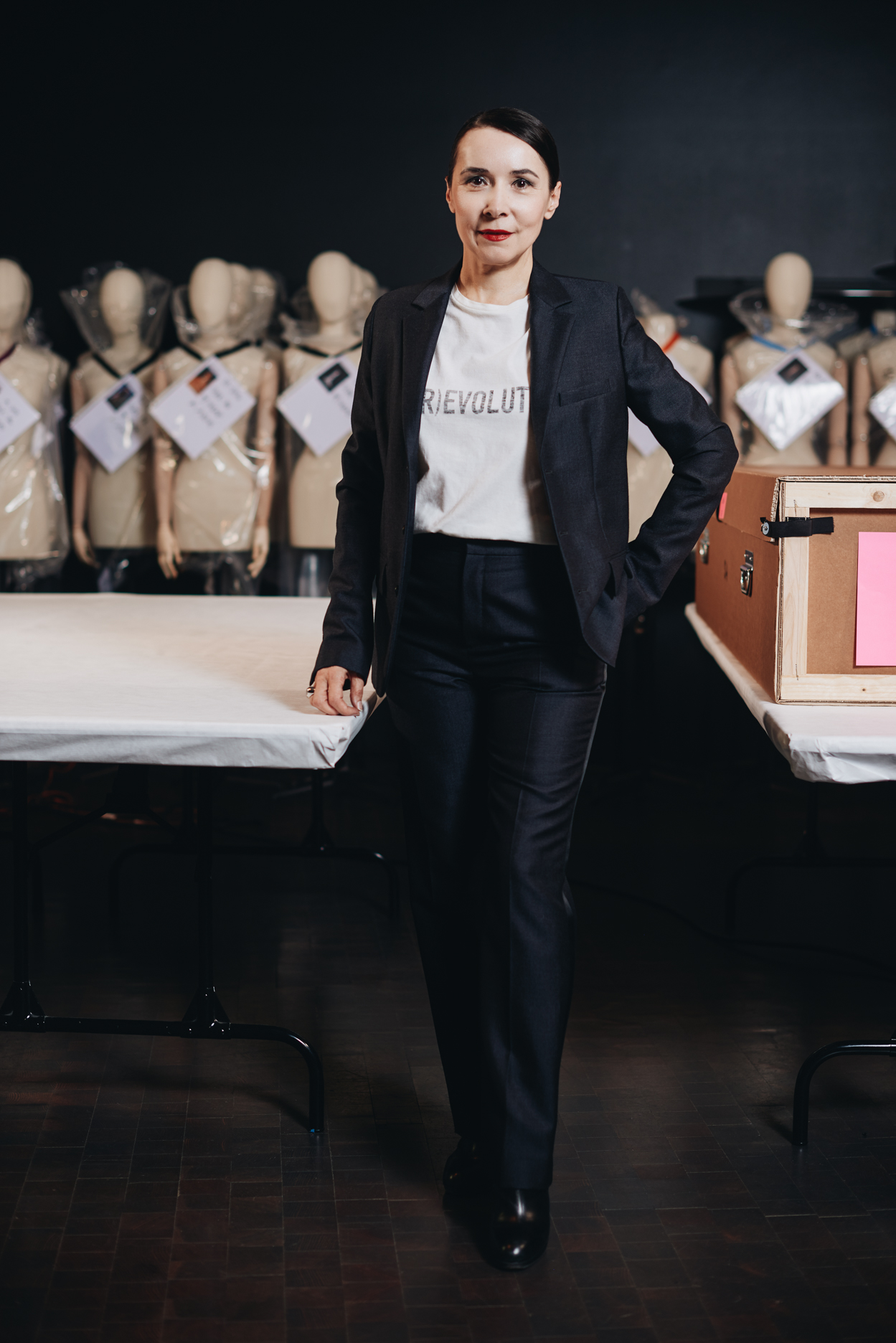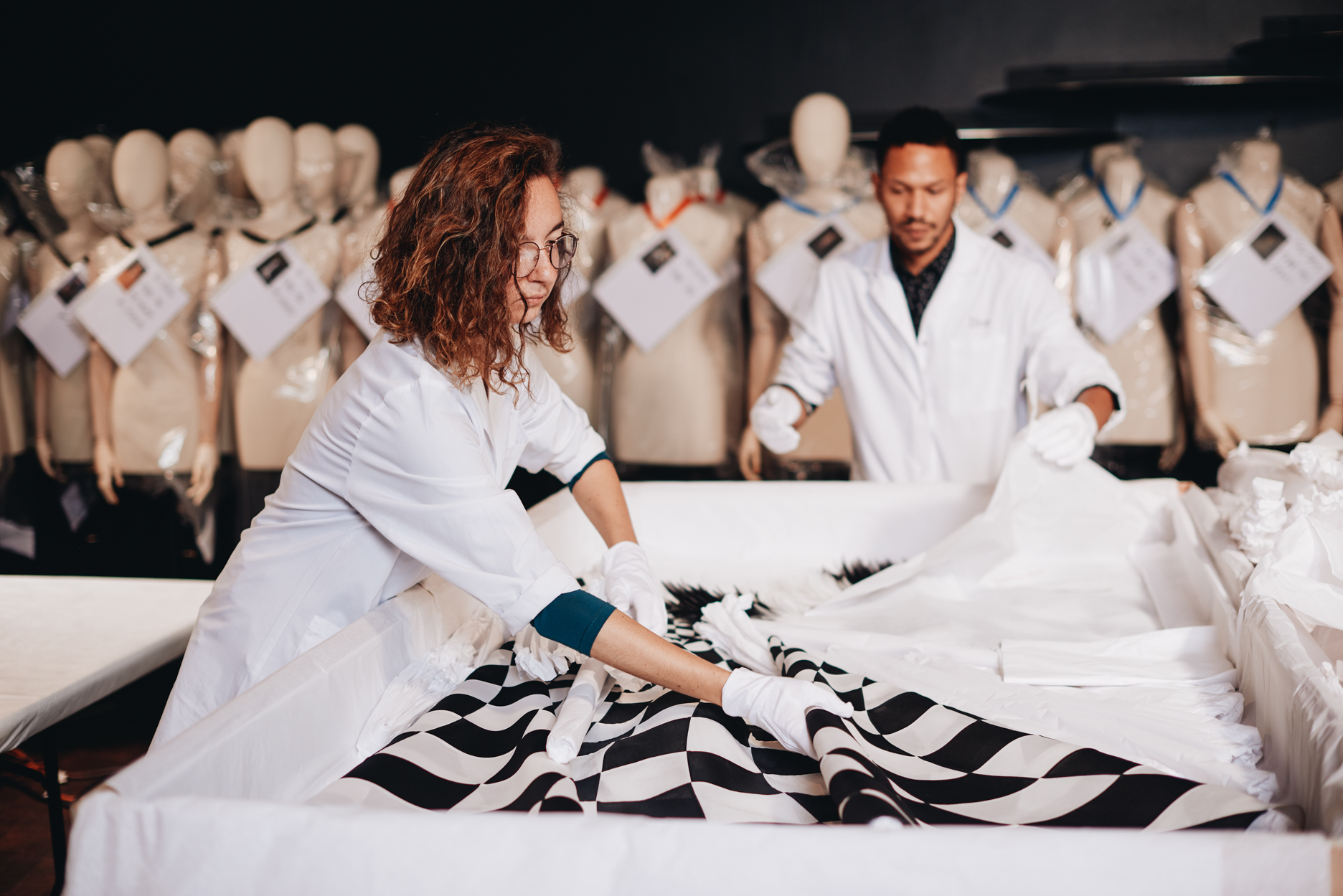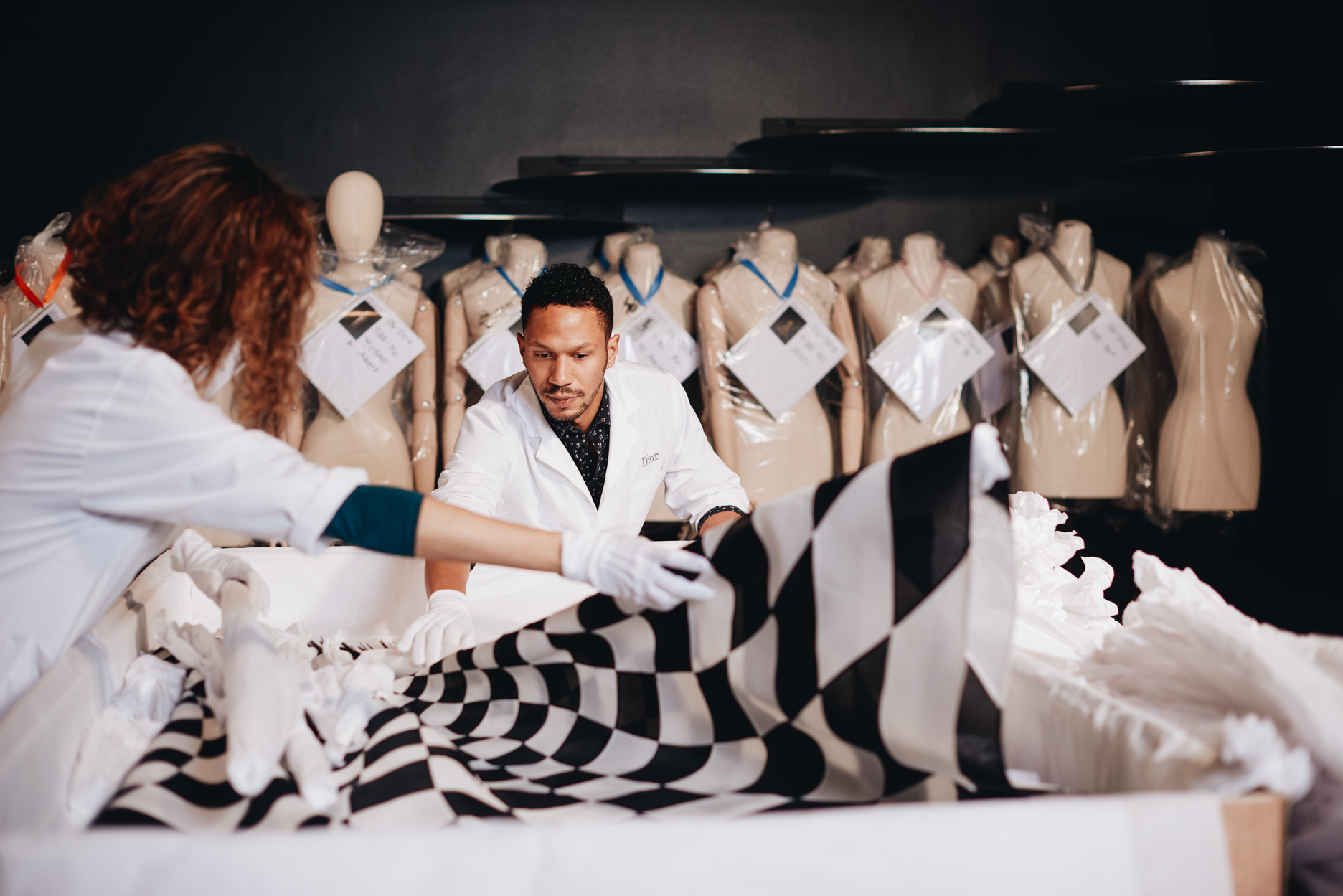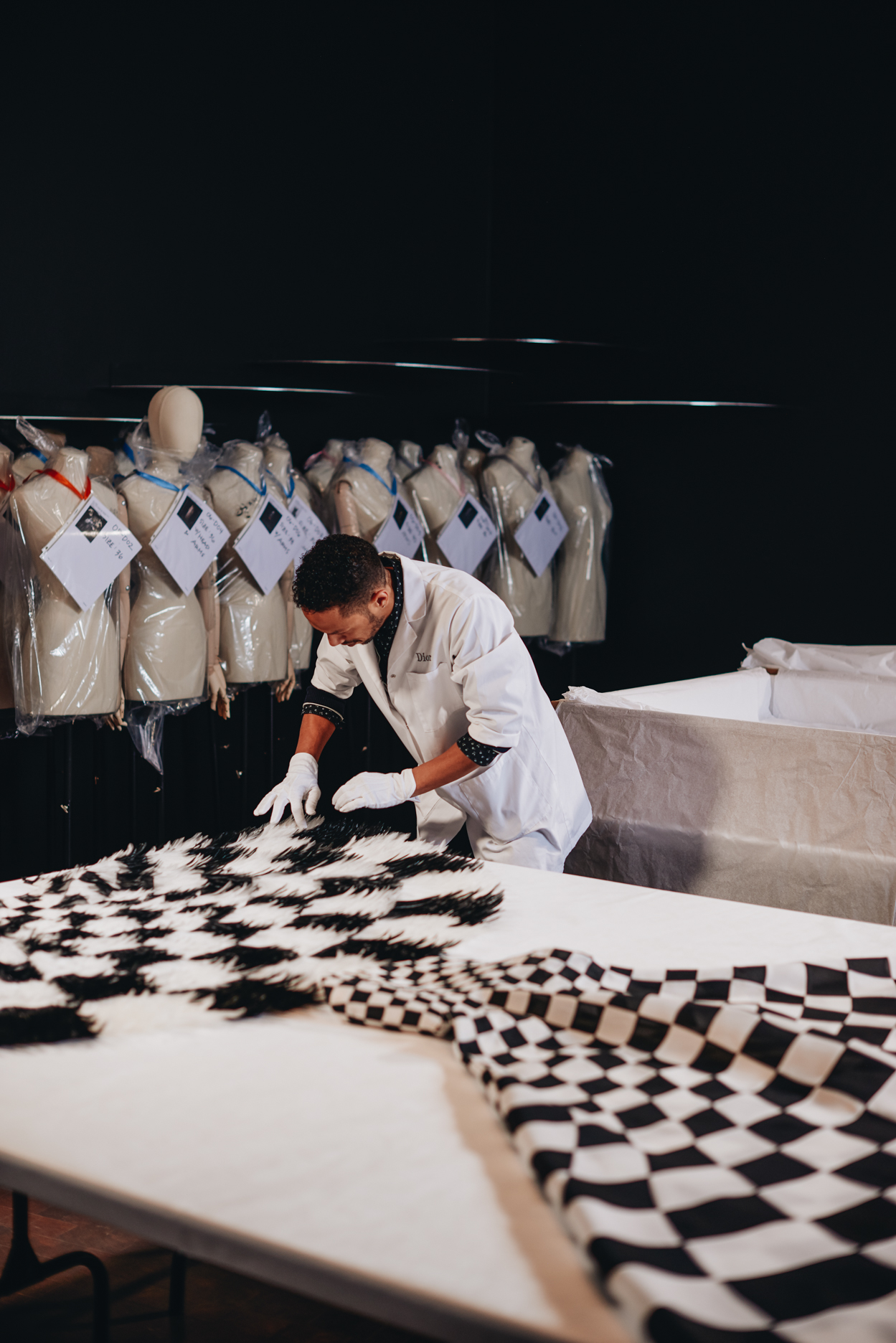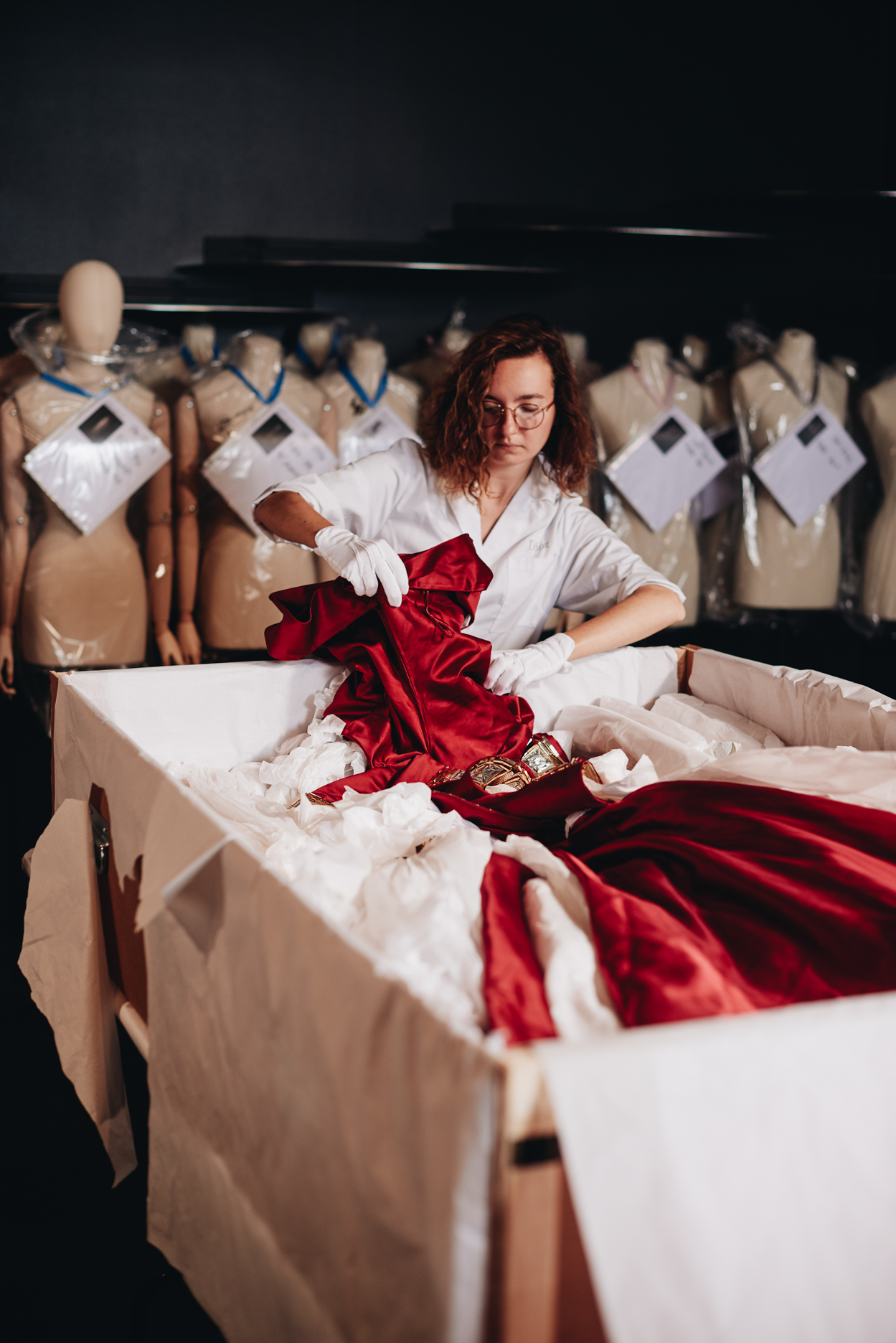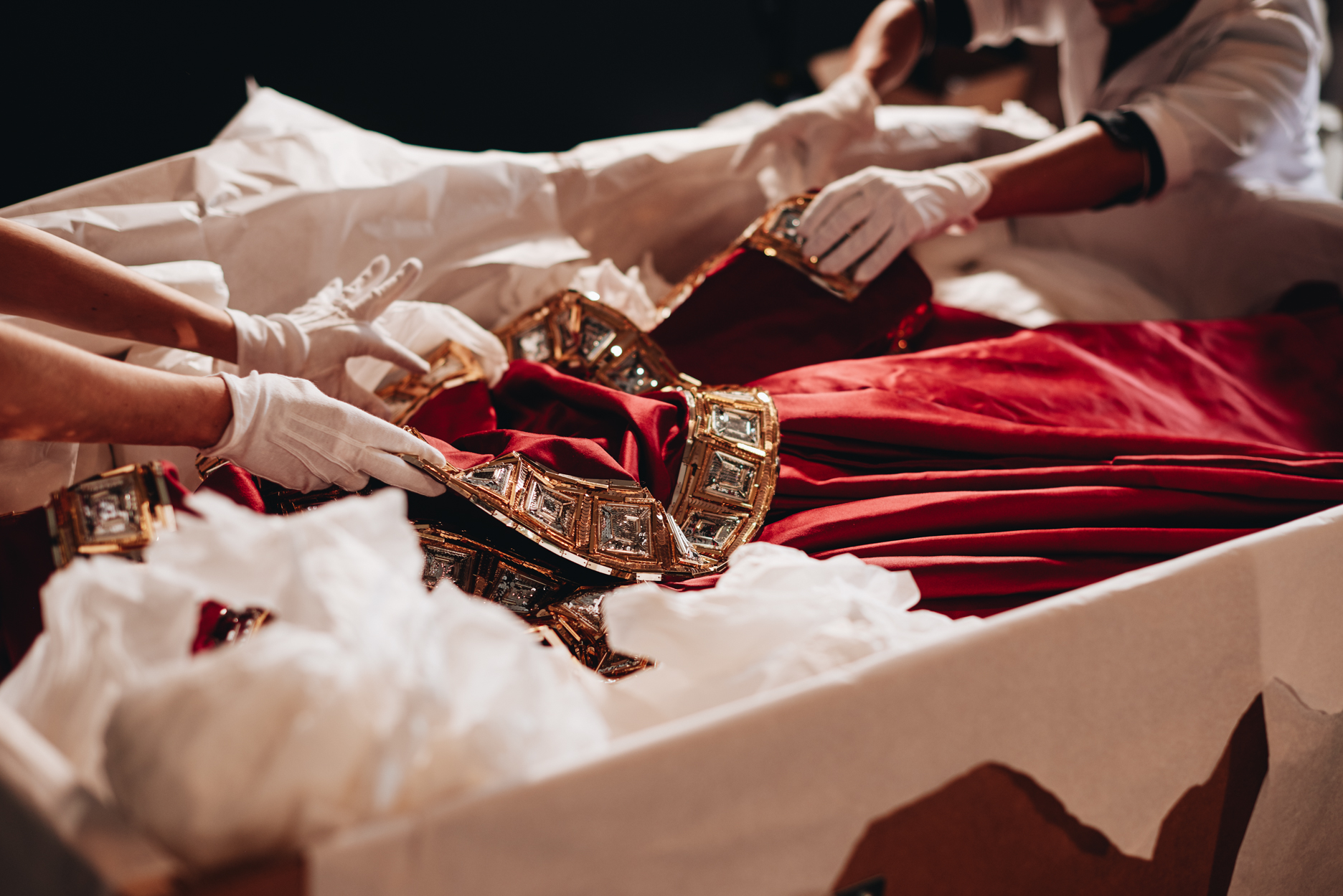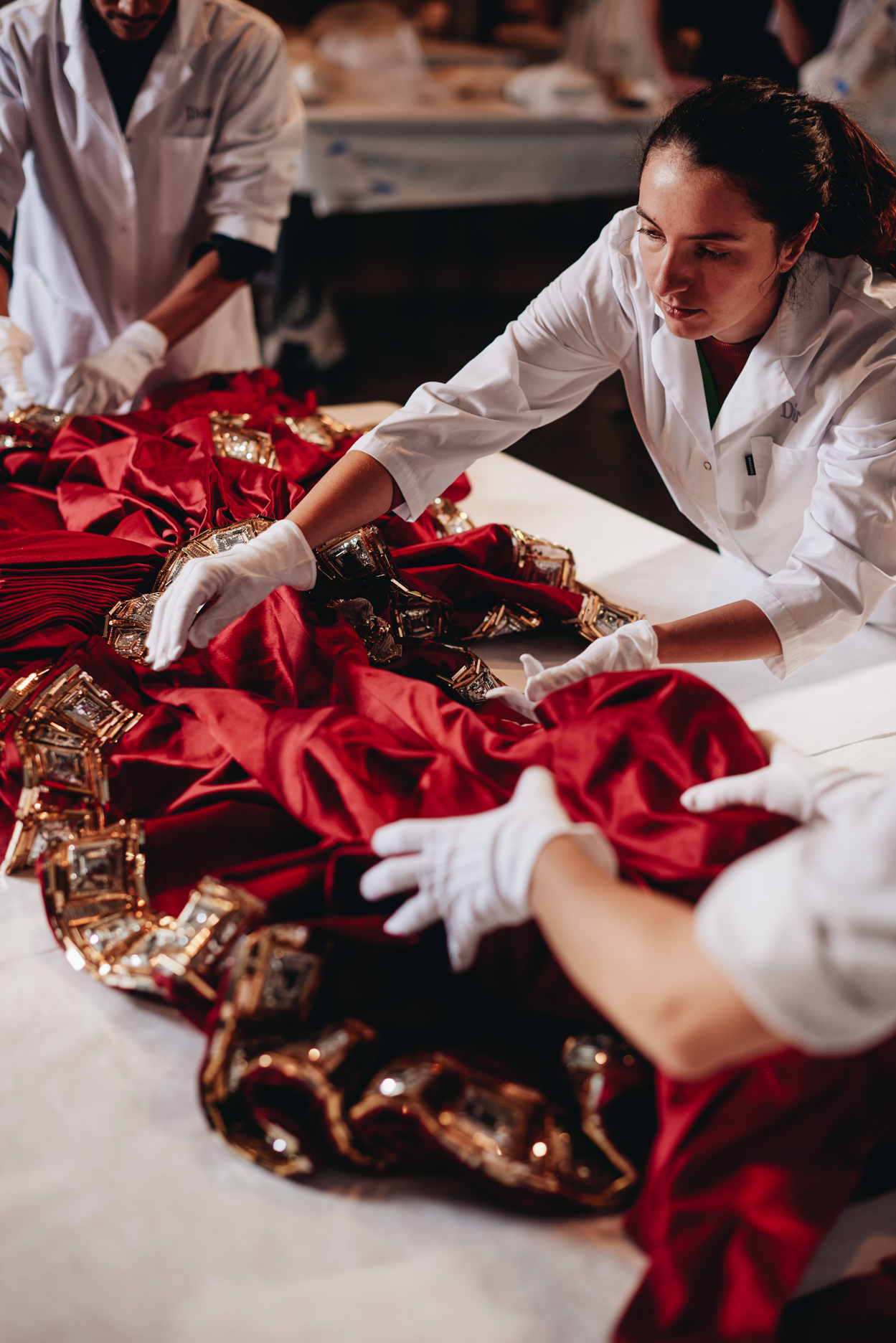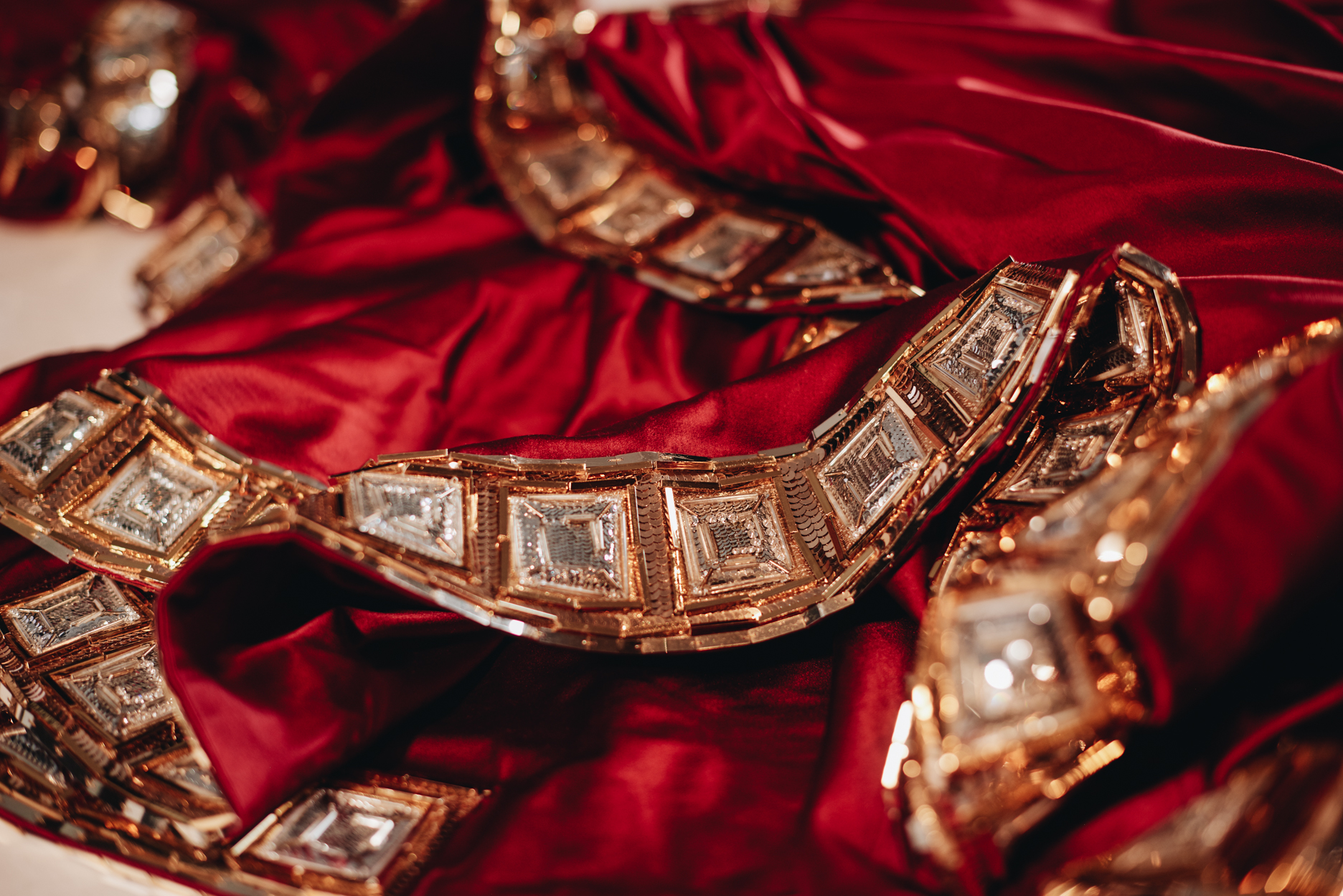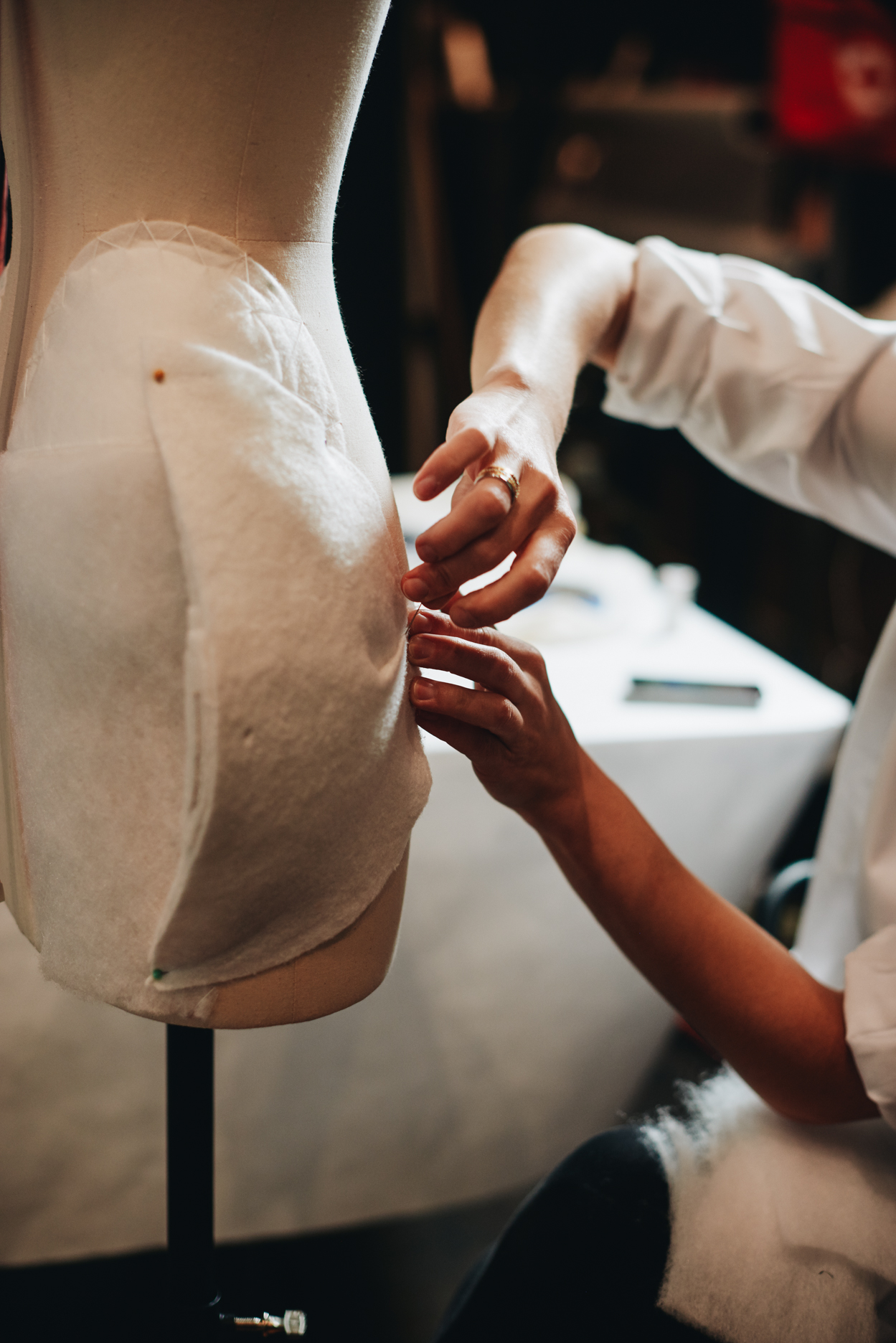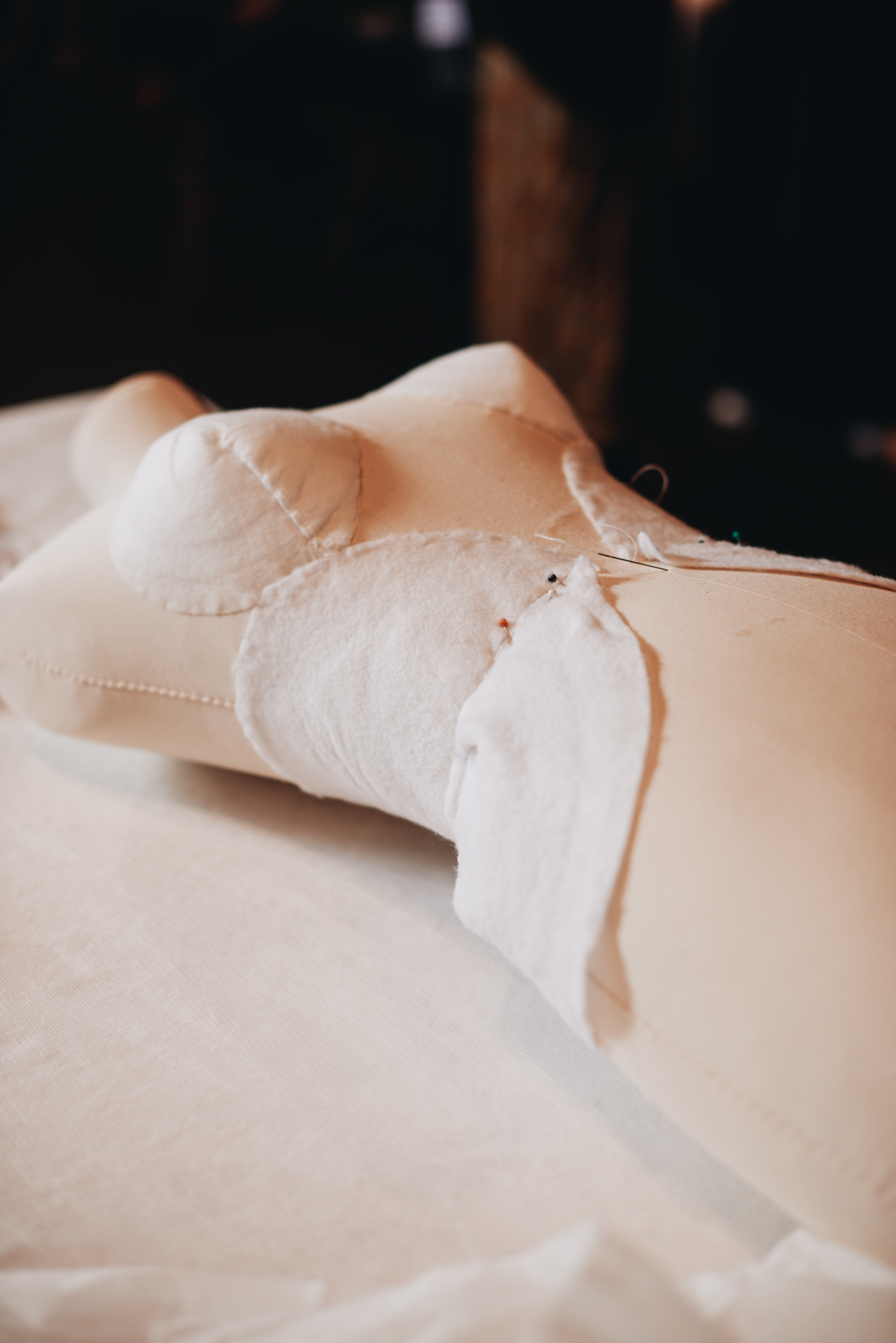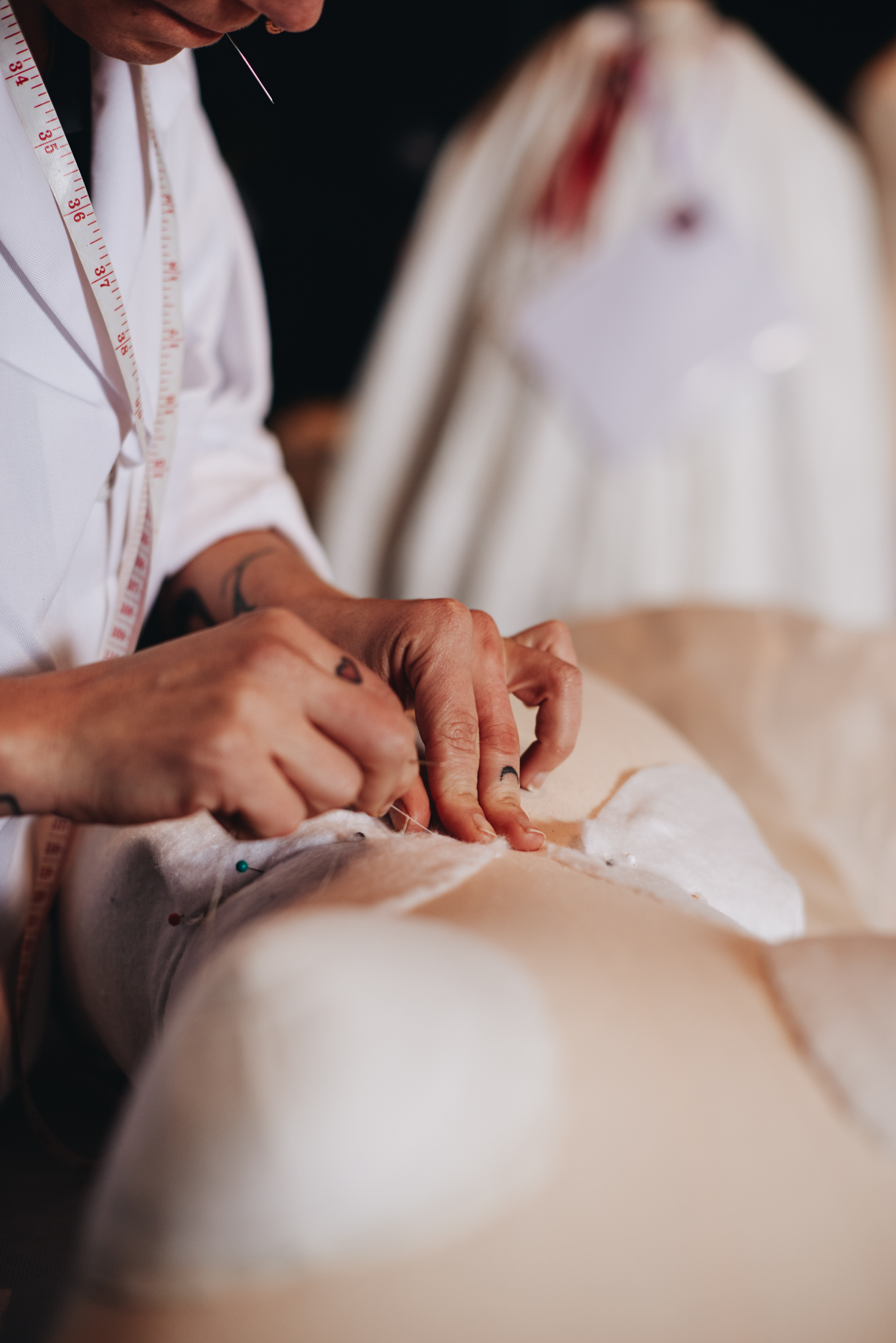The Local newsletter is your free, daily guide to life in Colorado. For locals, by locals.
Museums make fashion exhibitions look like a flawless collection of beautifully assembled gowns, but coordinating the shipping and staging of designer ensembles is a complicated (and painstaking) process. After all, a delicately embroidered 1950s organza ball gown can’t just be packed in a suitcase and flown over on Air France. That’s why I jumped at the rare opportunity to go behind-the-scenes as Avenir Foundation Curator of Textile Art and Fashion Florence Müller and the Dior Héritage team worked to set up Dior: From Paris To The World at the Denver Art Museum, just weeks before its opening on November 19.
The extraordinary exhibition features about 200 dresses and gowns that make up a 70-year retrospective of the legendary French haute couture house Christian Dior. As a designer, Dior is revered as one of the primary architects of post-World War II fashion. His “New Look” revolutionized the fashion world, with its hyper-feminine and romantic hourglass silhouettes, defining the look of the late 1940s through 1950s. He’s also widely credited as the man who brought French haute couture back from near extinction after the war. Although the house Dior founded has now existed far longer without its namesake at the helm—Dior died in 1957—the fashion codes he established as part of his legacy, including the iconic bar jacket and his love of flowers, have provided his design successors with a rich archive to mine for inspiration. The dresses and gowns in the DAM exhibition range from those created during Dior’s lifetime to ones by current artistic director Maria Grazia Chiuri, the first female designer ever appointed to Dior.

But before these striking ensembles could be displayed for the public, they had to make it to Denver—and what a journey it was. As members of the Dior Héritage department explained, a team of eight people at the Paris fashion house individually packed each dress in an acid-free cardboard and wood box along with mountains of tissue paper, used in an effort to preserve the garment’s shape and avoid hard creases forming in the fabric during transit.
As the unpacking gets underway at the DAM—the anticipation is so great it feels like Christmas—Müller points out that the majority of the haute couture dresses in this show are from the Dior Héritage Collection, and have rarely been shown outside of Europe. She also explains that many couture houses didn’t even begin actively collecting their own creations until the 1990s, as fashion exhibitions slowly gained acceptance at major museums—something Müller was instrumental in early on in her career. “In 1983, the Met [The Metropolitan Museum of Art in New York City] dedicated the first exhibition to a living couturier, Yves Saint Laurent, and then a 10-year survey of Christian Dior’s haute couture was on display at the Les Arts Décoratifs in 1987 (I was co-curator of this retrospective),” Müller says. “Finally, major traveling fashion exhibitions began in the early 1990s with Chanel leading the way.” Dior now has one of the largest archives of any haute couture house.
The first dress the Dior Héritage team unpacks is from Maria Grazia Chiuri’s Spring 2018 Haute Couture collection, which is inspired by surrealist Spanish artist Remedios Varo, known for her dreamlike imagery. This strapless evening gown is actually comprised of individual squares of black and white triple organza sewn together. As each piece gets larger from the bodice through the skirt, it allows your eye to perceive a sense of movement. The accompanying organza cape is just as intricate; again, individual, graduated squares of organza are sewn together and embellished with feathers—also graduated in size—and individually stitched to the cape. It is a masterpiece of melding structure with design.
A John Galliano gown is the next piece unpacked by the team (the gown is so heavy it takes three people to lift it out of its box). It’s from his Fall 2004 Haute Couture collection, which featured turn-of-the-century hobbled silhouettes based on European queens. This elaborate crimson gown, constructed out of dramatic fabric folds and elaborate jeweled embroidery, is cut low along the bust line so that you can actually see the top of the nude corset (an undergarment usually required with a 1950s Dior evening gown). Galliano, whose fantastic couture creations and spectacular runway shows marked his tenure at Dior, frequently designed gowns which involved the work of dozens of people, from seamstresses and tailors to specialty embroiderers working all over Paris.
The process of dressing the mannequins is just as involved as the unpacking of the gowns. And unlike editorial styling—where the clothing is manipulated to fit the model—these dresses cannot be altered to fit the mannequin forms. “The mannequins all have to be shaped to fit the dresses,” explains Müller, “and there is a team of 12 in Denver working on this process that include some people from the House of Dior.” Indeed, bust forms are padded with polyester or cotton batting and felt at the hips and bust, or even shaved down to conform the mannequin’s figure to the shape of the dress.
The entire process is, quite obviously, labor intensive. It also doesn’t even begin to take into account any of the other types of artifacts Müller has incorporated into the exhibition, like toiles (or muslins)—mockups of garments—accessories, paintings, photographs, and illustrations. Weeks of work go into finalizing each detail, with Müller making decisions about which pieces go where right up to the start of previews—happening this weekend.
It’s a meticulous process, but worth it, as museum-goers will have a unique opportunity to appreciate the beauty and splendor of Dior’s haute couture creations without leaving the Mile High City.
If you go: Dior: From Paris To The World, is on display from November 19 to March 3 at the Denver Art Museum’s Hamilton Building, 100 W. 14th Ave.; Tickets are available online, and advance reservations are suggested.
Photography by Paul Miller Photography. A special thank you to Dior, Dior Héritage, and the Denver Art Museum.




